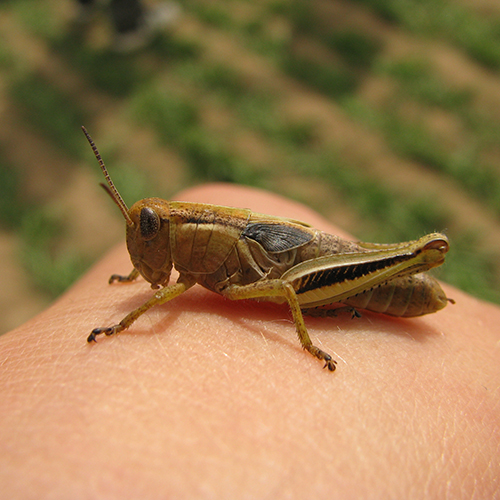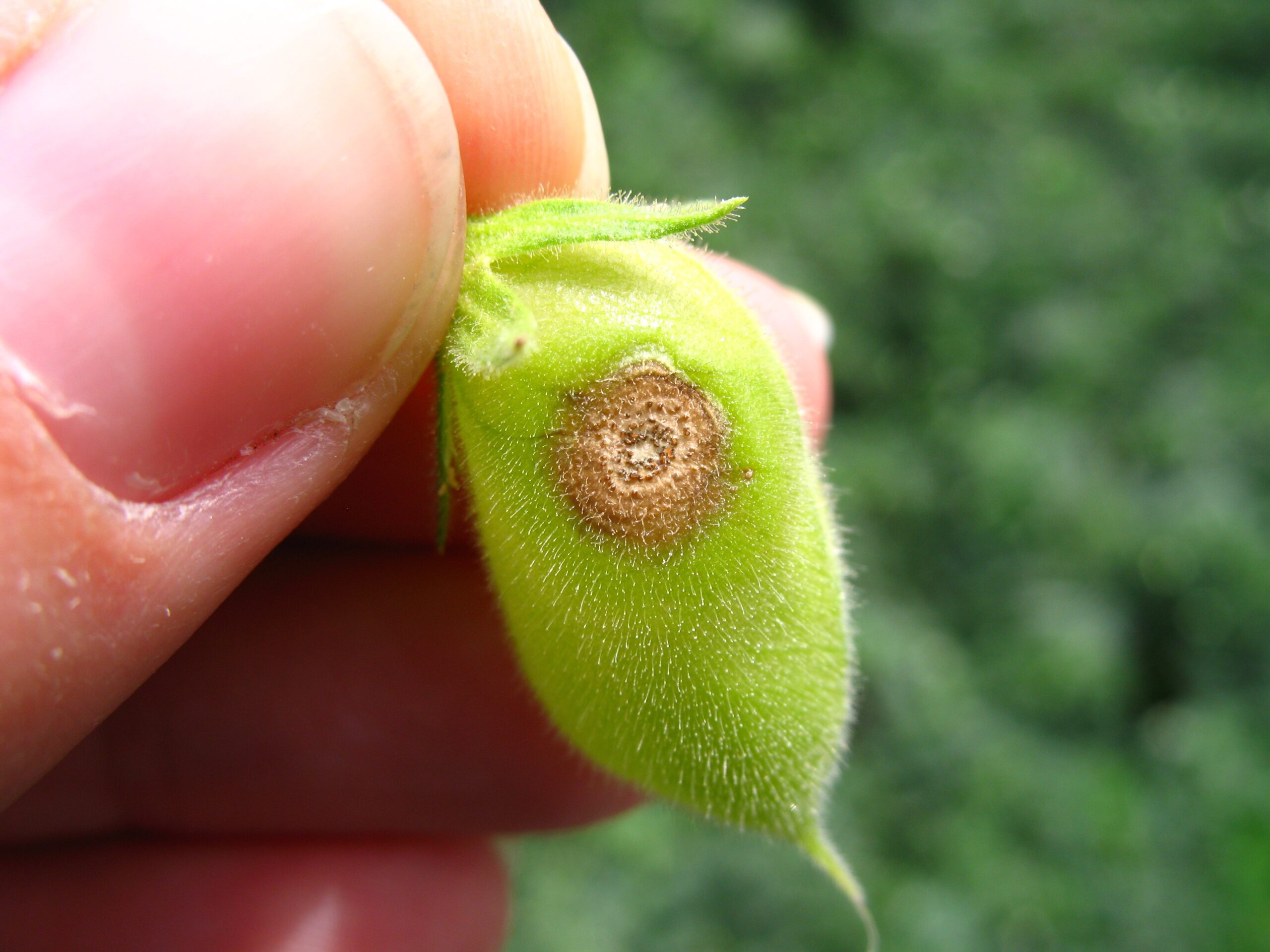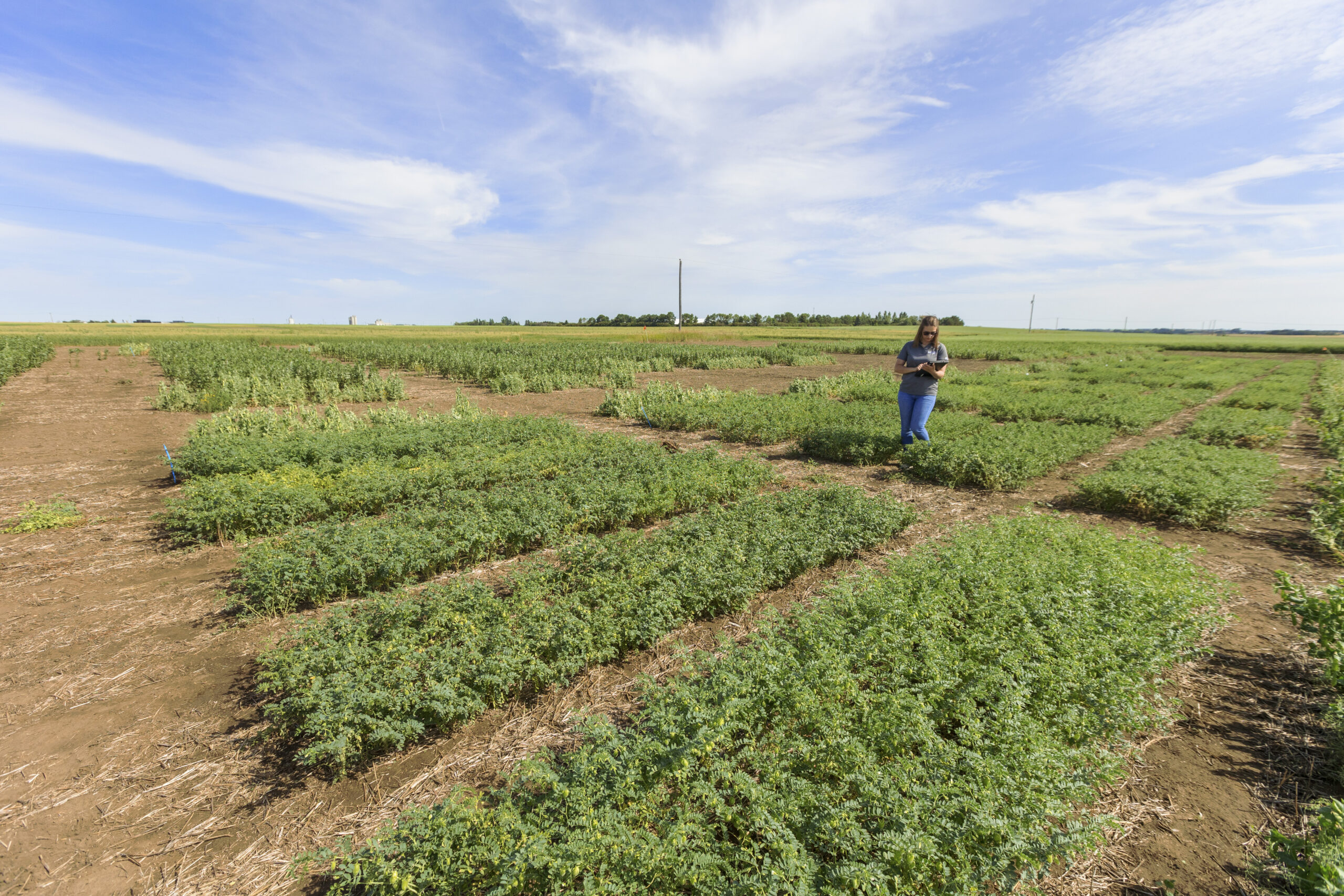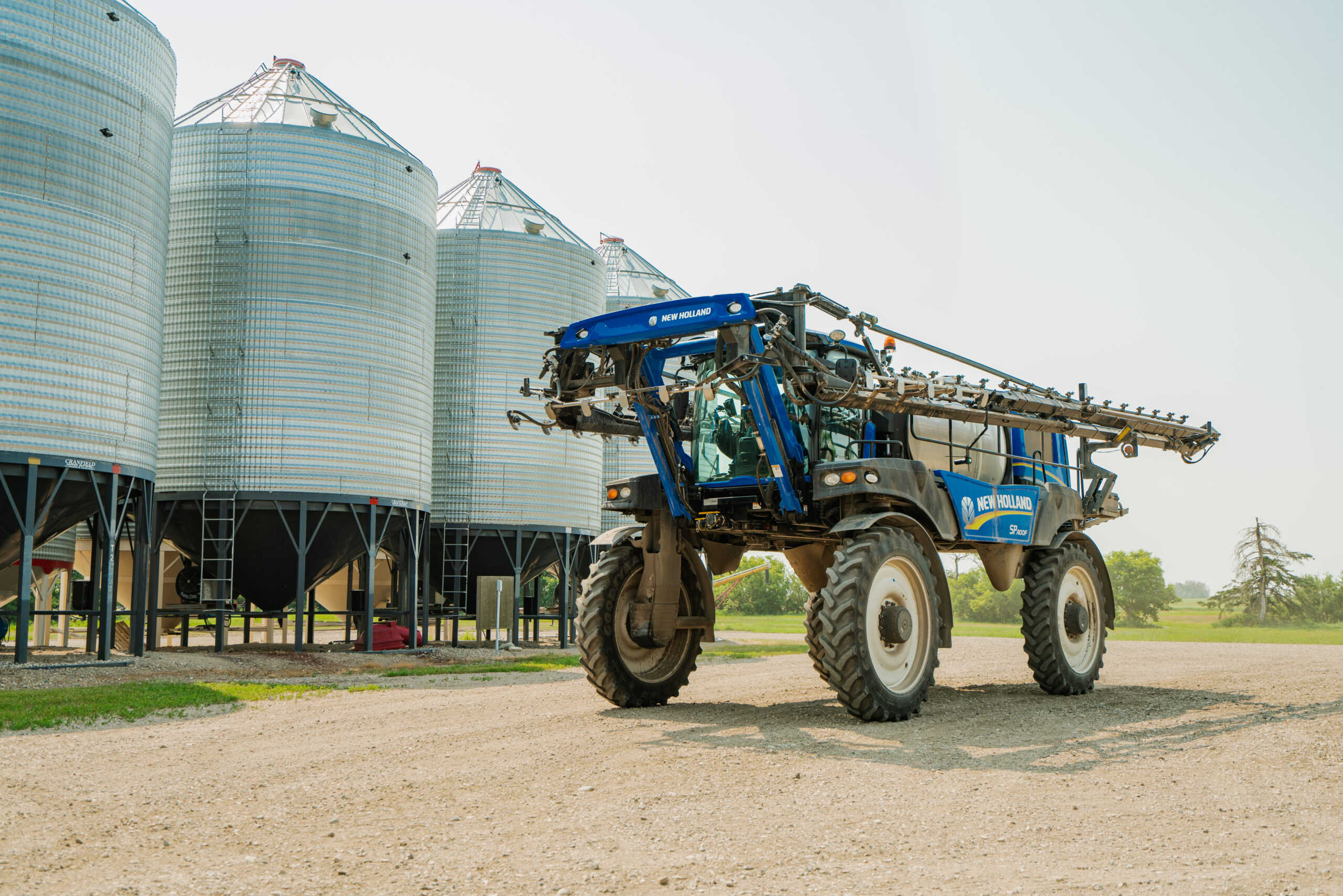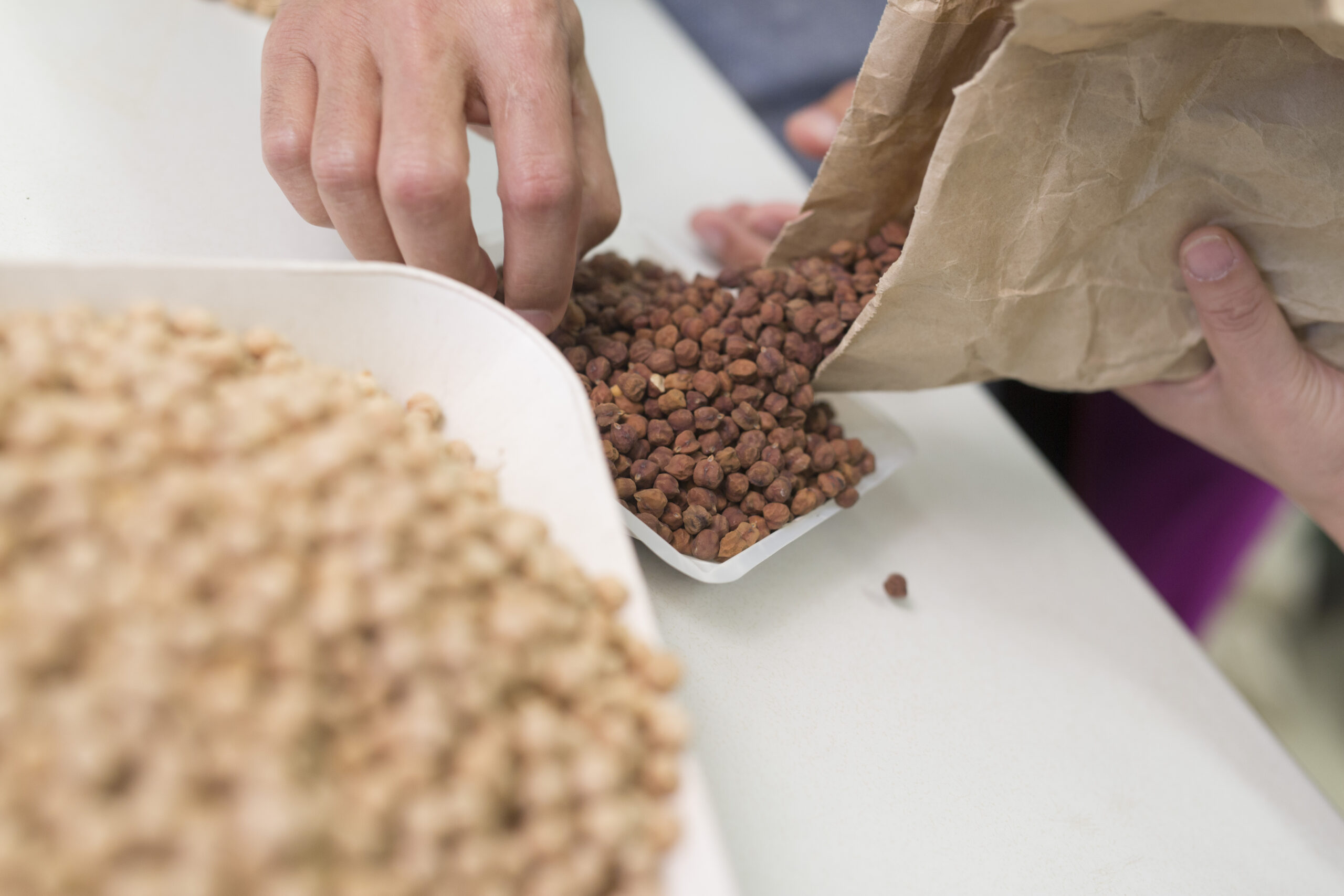Diseases & Plant Health Concerns
Ascochyta Blight
Aschochyta blight is one of the most significant diseases in chickpeas.
Scouting Tip: scout chickpea crops early and often for Ascochyta and be prepared to make initial fungicide application as early as the 7-10 node stage.
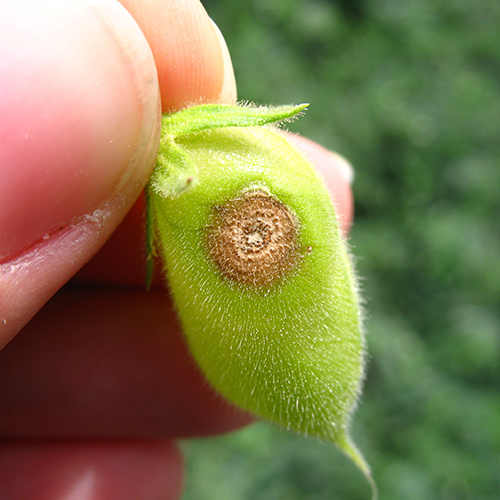
Source: Saskatchewan Ministry of Agriculture
Sclerotinia (white mould)
Sclerotinia is generally not a predominate chickpea disease, but can occur under high rainfall conditions and where the crop canopy is very dense.
Scouting Tip: Sclerotinia is characterized by white, cottony, fungal growth on diseased tissue.
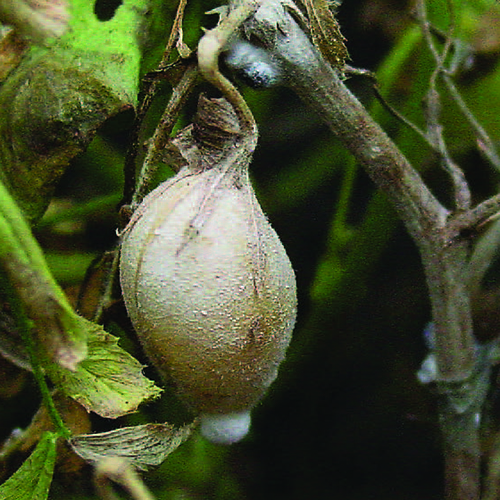
Botrytis (grey mould)
Late-season Botrytis infection favours moist conditions and dense canopies.
Scouting Tip: keep an eye out for Botrytis after flowering and examine pods and stems for dark grey, fuzzy, fungal growth.
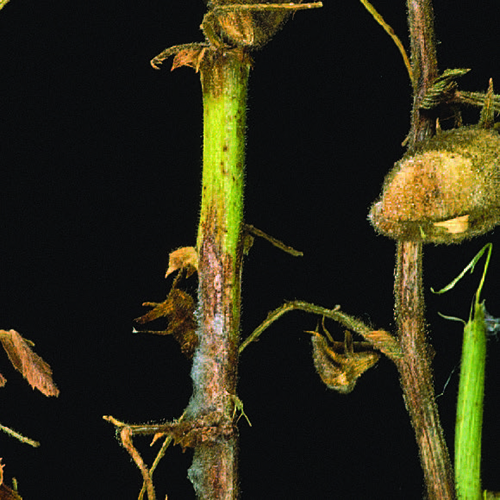
Chickpea Plant Health Issue
A single cause of the health issue in chickpea has not been identified but investigations are on-going to rule out contributing factors.
Scouting Tip: onset of symptoms, including leaf tip chlorosis and wilting of new growth or lateral branches, are most predominant during flowering to early development and often appear after periods of humidity or a rainfall event.
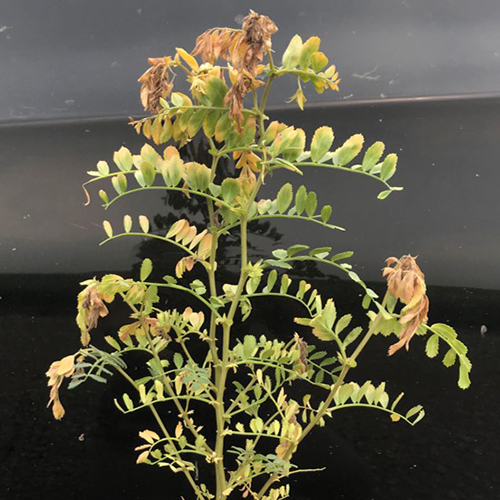
Source: Saskatchewan Pulse Growers
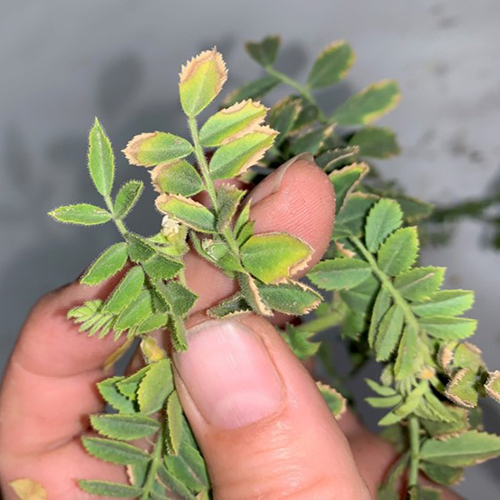
Source: Saskatchewan Pulse Growers
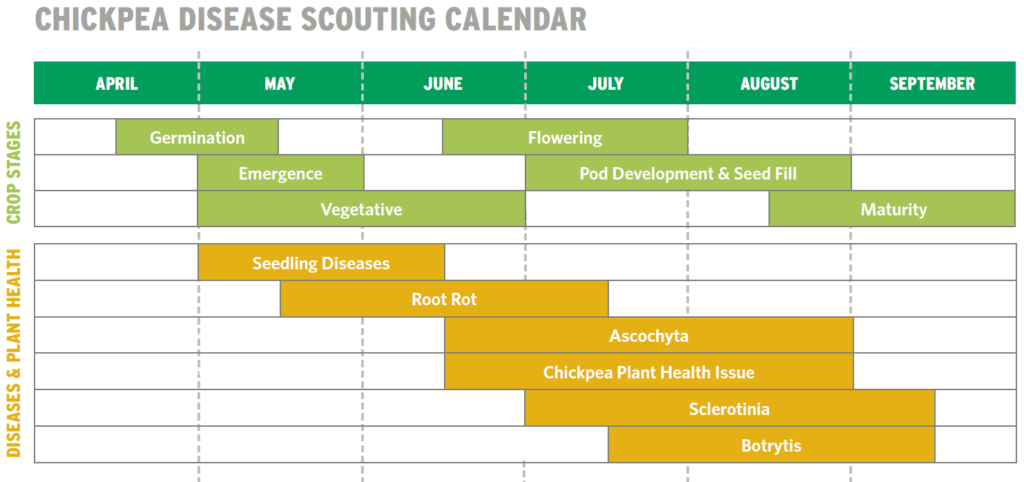
Insects
Did You Know? Chickpea leaves, stems, and pods are hairy and secrete malic acid.
This makes the plant much less attractive to insects feeding above-ground when compared to other pulse crop plants.
Cutworm
A nominal threshold of one or more larvae per one meter of row, when larvae are small (less than 2 cm), or 20% of plants cut can be used in chickpea.
Scouting Tip: dig in the soil to find cutworms in areas where you find bare patches or freshly cut plants, typically on hilltops, south facing slopes, and drier areas of the field.
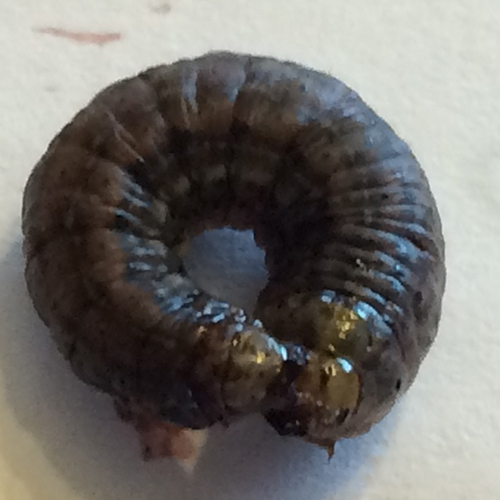
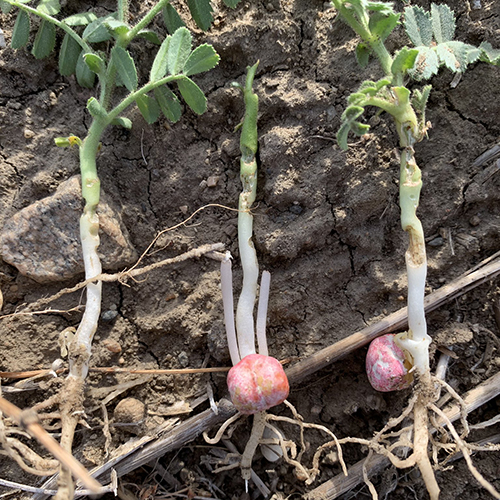
Source: AA Agronomic Consulting
Wireworm
Wireworms damage crops by feeding on seedlings or the germinating seed. Damaged plants soon wilt and die, resulting in a thinner plant stand.
Scouting Tip: wireworms tend to feed along crop rows, so they might be found by digging in the soil where you find lengths of missing plants along an otherwise healthy row.
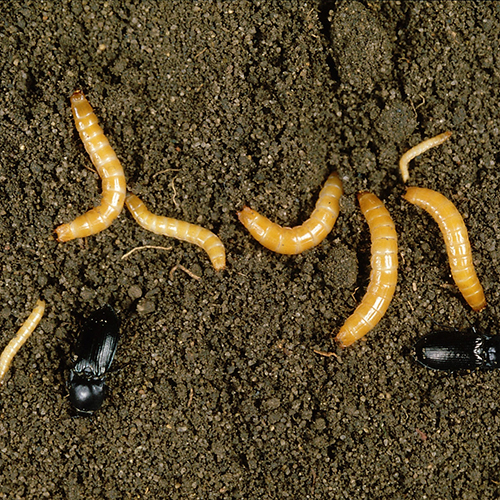
Grasshopper
Grasshoppers rarely cause damage to chickpeas and insecticide application is typically not warranted.
Scouting Tip: if damage does occur in chickpea it is usually at very early crop stages and often isolated to field margins ajacent to ditches.
